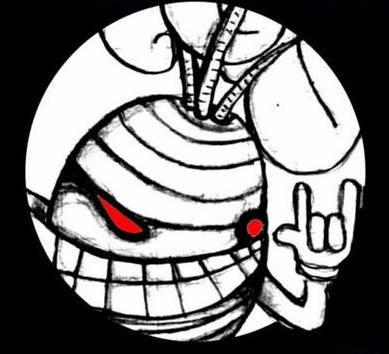
Fun fact, english used to count the same way as german, and it still has the numbers in “reverse” from 13 to 19.
Eleven and twelve kinda are as well. They literally mean “one left” (ain-lif) and “two left” (twa-lif) with the “over ten” being implied.
I’m 43 years old and this is the first time I’ve seen an explanation of these numbers. Thank you!
German’s my first language and I am kinda proficient in english but I never realized that the english numbers 13 to 19 work like like ours…
French is pretty stupid too. Smart Belgium with french as national tongue only changed that number aberration: They use the made-up word “octante” for eighty and “nonante” for ninety, instead of “quatre-ving” (four-twenty) or “quatre vingt dix” (four-twenty , ten) in proper french
What if I told you that all words are made up?
In Belgium we use nonante, not octante, that is, iirc only used in Switzerland. That means we at least don’t use quatre-vingt onze etc.
oh my bad… so they went “septante” “nonante” and kept the “quatre vingt” in the middle… this is more weird
Dunno, I prefer french to spanish tbh. Maybe its because basque is like French.
Quatre-vingt douze isn’t incredibly onerous when you use it in practice.
Quatre-vingt dix huit or quatre-vingt dix neuf are definitely more of a mouthful and illustrate the point better.
hard agree i actually think france’s method of counting is pretty intuitive
Yeah France is fine
I’m actually impressed by this map. The French speaking part of Switzerland is not only differentiated from the German speaking part, it is also differently coloured than France, since Swiss French has more sensible numbers.
Finnish is actually 9*10+2
Yhdeksänkymmentäkaksi
Yhdeksän = nine
Kymmentä = of ten
Kaksi = two
French language uses math to speak numbers if anyone is wondering about France.
Edit: Apparently I wasn’t precise enough for the dude below. It starts at 70 and ends at 99 every time you get to those numbers. De rien, tabarnak.
Not quite. They just have remnants of an old base 20 system that kicks in for specific numbers.
Je le sais, je parle français .-.
Haha, nice. Sorry, I meant no offence, was just further explaining the weirdness of French numbers (I love that kind of shit in languages)
They must have meant 9*10+2 for most of the countries. For French and Danish you would just remember the word for 90 instead of using logic to get there so they are actually quite 90+2.
So do you mean to suggest “quatre-vingt-dix” just means 90 and doesn’t also mean “four-twenty-ten”?
You’re right. Only Denmark deserves 2+90.
Ugh okay here’s another “Danes shouldn’t be allowed to make number stuff”:
The time 15:25 is “five minutes before half 4”
“Fem minutter i halv fire”
So you round up to 16 before even halfway, what!?
That makes perfect sense to me though. In Swedish we’d say fem i halv fyra. Five minutes to half four.
But in English half four would be short for half past four. I guess.
Counting like the Danish, however, that is an abomination.
What’s wrong with “25 over 3?” I see the need for half 4 by itself but things being relative to that is so weird to me
Well, it’s interesting because that would be the case with 15:20. That’d be tjugo över tre (twenty past three). But specifically 15:25 would be fem i halv fyra (five to half four). 15:35 is fem över halv fyra (five past half four).
And then 15:40 is tjugo i fyra (twenty to four).
So :25 and :35 are weird edge cases.
Man 3:25 is right there
Same in Dutch,
“Vijf voor half vier”
Yeah the Dutch way of saying time is also messed up, I still have to think about it for a moment every time.
I’m very Danish and refuse to adhere to this nonsense. It’s pronounced “three twenty-five”.
Jeg elsker dig for det
shakes fist THE DANES!
We can also do 2+90 here in the UK. There’s a nursery rhyme about “four and twenty blackbirds” that I think the kids are still learning.
Bit of a sidenote.
Are the English numbers 11-20 influencer by the base 20 system of french back when we had French speaking royalty? And for some reason they’re the only unique “digits” for lack of a better term that survived because once we get to twenty it’s a pure base 10 system with a consistent pattern throughout.
I’m hoping someone more knowledgeable than me can tell me if my thinking is correct or not.
Edit: thanks for the history lessons, were interesting to read through.
No, 1-12 are influenced by the old base 12 Germanic/Norse system, which is why -teen starts at thirteen, same as in German (11: elf, 12: zwölf, 13: dreizehn, 14: vierzehn & so on)… The -teen for 1x in english is also a carryover from this, being threeten, fourten, fiveten etc. with only numbers over 20 having their orders reversed - German has something similar with “und” only appearing in numbers over 20. English did historically too, eg. “four and twenty blackbirds”.
Base 20 was historically used for large numbers though, eg “four score and seven years” by Abraham Lincoln, which was a poetic way of saying 87 inspired from Psalms 90:10, which says “The days of our years are threescore years and ten; and if by reason of strength they be fourscore years, yet is their strength labour and sorrow; for it is soon cut off, and we fly away.” in the King James Version, which reflects that using base 20 for large numbers (and not just 80) was not uncommon in the 17th century.
Four and twenty blackbirds baked in a pie…
That still fits the pattern of “bigger number, then smaller number.”
True. It does match the French pattern of 4x20+x.
It does exactly, and I didn’t notice that. “Four score and twelve.”
97
4x20 + 10 + 7
Is this a Michael Hobbes joke?










